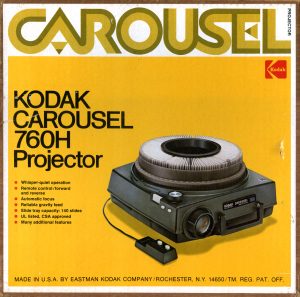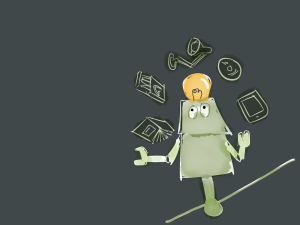Why Learn About AI
1 Technology, Change and You
REFLECTION
In 1922, Thomas Edison declared that the motion picture would revolutionise education. He believed it would replace all textbooks1.

Yet, the teacher’s use of film has been limited. The photographic slide projector was adopted by many teachers, from the 1950s up to the late 1990s.
Unlike when using film, teachers could:
- prepare their own slides cheaply
- use the projector like the blackboard – a tool that does not change their way of teaching
- reuse the slides, re-order them and refine them2.
If there was a new technology that could help you,
- what features would you look for?
- would you change your teaching practice to use it?
- would you be afraid of being forced to change?
Artificial intelligence and you
As a teacher, every day you deal with changes brought about by technology. Its applications change the world in which you teach, as well as the students in your care. Eventually, they change what you teach about – the content, skills and context. They can also change your teaching methods.
This textbook deals with how artificial intelligence (AI) can change the way you teach.
Why AI? Where it is effective, the speed and amplitude of the change AI brings can be destabilising. And what cannot be done by a machine that claims to be intelligent? Could it outperform you as a teacher? Could it replace you in the classroom? Several important questions need to be answered.

Today’s artificial intelligence applications are built for one specific task and one type of user – for example, software that can translate what you write cannot predict stock prices.
As for the task itself, yes, AI can perform some tasks better than humans. But even a child can beat the best AI in many others. AI has a long way to go before being able to supplant a human in a rich cognitive, social and cultural activity such as teaching. But it can help by adding to what a teacher is capable of doing. Experts speak of “An Augmented Human“3, which, in our case, would be “An Augmented Teacher”.
Where AI can help in education, pedagogical experts stress that the teacher should always be in the loop, overseeing what it does. Effective AI solutions in the classroom are those that empower the teacher. When the teacher knows what the student is learning, the gains are significant4.
The goal of this textbook is to give teachers the knowledge necessary for deciding if, where and how AI can help you. We hope to help you prepare yourself for the future, taking in your stride the changes brought by AI.
See what BBC’s Will a robot take your job quiz has to say about the future of different jobs in the UK. It says your job is safer from automation if you have to negotiate, help and assist others, or come up with original ideas as part of work. For “secondary education teaching professional”, it pegs likelihood of automation at 1%.
1 Cuban, L., Teachers and machines: The classroom use of technology since 1920, Teacher College Press, 1986.
2 Lee, M., Winzenried, A., The use of Instructional Technology in Schools, Lessons to be learned, Acer Press, 2009.
3 Holmes, W., Bialik, M., Fadel, C., Artificial Intelligence In Education: Promises and Implications for Teaching and Learning, 2019.
4 Groff, J., Personalized Learning: The state of the field and future directions, Centre for curriculum redesign, 2017.
